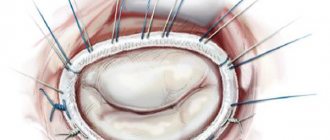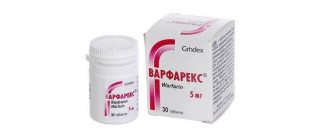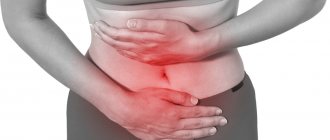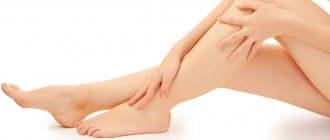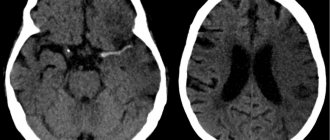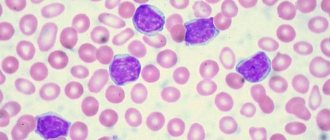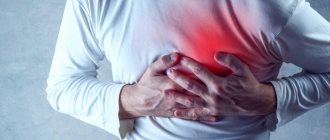Symptoms of neurocirculatory dystonia
- “Heart” symptoms – pain or discomfort in the heart area, tingling, rapid heartbeat, a feeling of strong pulsation in the head or cervical region, morning swelling of the face.
- Asthenic symptoms – fatigue, inability to perform physical activity for a long time, weakness, drowsiness.
- Respiratory symptoms - shortness of breath, stress, for example, long walking, lead to the appearance of a constricting lump in the throat, a person feels the impossibility of taking a full breath, and an irrational fear of suffocation may develop.
- Vegetative symptoms – dizziness, lightheadedness, blackness in the eyes, increased sweating. Against this background, the body temperature may rise slightly, or, on the contrary, drop below normal, the limbs become cold. Typically, such autonomic crises in neurocirculatory dystonia usually occur at night. Their duration is up to half an hour, in rare cases – 2-3 hours.
Make an appointment with a specialist, without queues, at a convenient time
+7
Sign up
Diagnosis of NCD by mixed type
Although the causes of VSD lie in a person’s head, physical health should not be neglected. If there are signs of dystonia, it is recommended to make a primary diagnosis, which includes:
- General blood and urine analysis.
- Blood chemistry.
- Ultrasound of vital organs.
- ECG.
- Rheoencephalography.
It is necessary to consult a neurologist, endocrinologist, cardiologist, gynecologist (for women), and urologist. Other specialists and studies are assigned as needed.
The main problem of modern doctors is that they do not consider the disease as a single whole of soul and body. Each specialist begins to treat a person exclusively in his own field, which ultimately leads to the prescription of a bunch of useless medications and a lot of wasted nerves and money. Therefore, when identifying NCD, it is recommended to immediately find a competent psychotherapist who can help the patient look at his body as a single system, and at his illness as a single problem, and find the underlying causes of the “failure.”
Types of neurocirculatory dystonia
There are different classifications of this disease. Thus, according to etiological characteristics, dystonia is divided into:
- Essential
- the disease occurs due to a hereditary predisposition to it. - Psychogenic
– the factor that provoked the disease is severe stress, psychological trauma or a prolonged state of excessive emotional stress. Also included in this category is dystonia, which occurs as a result of hormonal imbalance in the body. - Infectious-toxic
- regulation of vascular tone is disrupted after severe poisoning or taking certain “heavy” drugs. - Professional
– resulting from prolonged physical activity.
Neurocirculatory dystonia develops in different ways; it can manifest itself in mild, moderate or severe form. It is important to divide patients with dystonia into hypotonic and hypertensive groups. Their manifestations of the disease will be different:
- Hypotonic neurocirculatory dystonia
- patients of the asthenic type, with cold extremities, pale skin and muscle weakness. - Hypertensive neurocirculatory dystonia
- patients with excess weight, frequent heart pain and headaches, increased blood pressure and increased heart rate.
Causes of neurocirculatory dystonia of mixed type (ICD code 10)
Modern traditional medicine, despite its rapid development, still cannot say for sure what is the cause of VSD and NCD in such a huge number of people these days.
But this disease was known in ancient times. Hippocrates, who lived in the 5th century BC, called this illness “a disease of the soul,” and he was absolutely right.
Doctors believe that the cause of the development of NCD may be:
- Past infectious diseases.
- Chronic diseases.
- Hormonal imbalances.
- Disturbances of the endocrine system.
- Systematic physical overwork of the body.
- Interaction with harmful substances at work (poisoning).
- Frequent stress.
- Suffered psychological traumas, shocks.
- Lack of sleep.
- Hereditary factor.
They are partly right. But psychotherapists, psychologists, psychiatrists and many healers are sure that all nervous disorders and neuroses happen for only one reason - internal imbalance. Even if we agree that VSD appeared after a hormonal imbalance or a serious infectious disease, what caused them? After all, physiological diseases also have a psychosomatic cause. And the same hormonal imbalance often happens after stress and strong experiences. And the infection often sticks to us due to the decline of immunity, which has also decreased due to stress. Therefore, the root of dystonia is precisely the psycho-emotional state of a person.
Neuroses arise because various conflicts occur within the individual, there are unresolved problems, experienced shocks, fears, tensions, negative thoughts, and the like.
Which doctor should I contact?
Despite the fact that this disease does not pose a direct threat to life, it significantly worsens its quality. Therefore, if the symptoms described above are familiar to you, do not delay going to the hospital. Diagnosing the problem can be difficult due to the fact that its symptoms of neurocirculatory dystonia are also inherent in many other diseases.
Start by visiting a cardiologist. If he suspects dystonia of the neurocirculatory type, he will additionally refer you for a consultation with a neurologist and endocrinologist. After diagnosis, an experienced doctor will prescribe a complex of treatment, after which neurocirculatory dystonia goes away completely or goes into long-term remission.
Make an appointment with a specialist, without queues, at a convenient time
+7
Sign up
Diagnosis of VSD
Due to the fact that the symptoms of the disease are very diverse, it is difficult to make an accurate diagnosis. It is important to take into account all the patient’s complaints, his medical history, as well as objective research data and the results of additional research methods.
Additionally, studies such as:
- Electroencephalography (EEG)
- Studies of blood vessels of the head and neck;
- ECG;
- Magnetic resonance imaging, etc.
In addition to the neurologist, the examination may involve such specialists as an ophthalmologist, otolaryngologist, cardiologist, endocrinologist, psychotherapist or psychiatrist and others.
Diagnosis of the disease
The essence of diagnosing neurocirculatory dystonia is to conduct hardware-based non-invasive examinations in order to exclude diagnoses such as coronary heart disease, neuroses of various etiologies, hyperthyroidism, congenital or acquired heart defects, inflammation in the myocardium, etc. If these diagnoses are excluded, with a high degree of probability we can say that the patient has neurocirculatory dystonia.
The doctor prescribes the following types of diagnostics:
- Ultrasound examination of the abdominal organs.
- Blood tests - general, detailed, for hormones.
- Holter monitoring.
- Electrocardiogram.
- Orthostatic test.
- ECHO ECG.
Anxiety disorders under the guise of vegetative-vascular dystonia
Magazine “Medical Council.
Neurology/Rheumatology” No. 17 2017 V.A.
Golovacheva, Ph.D.,
V.A.
Parfenov , Doctor of Medical Sciences, Professor First Moscow State Medical University named after. THEM. Sechenov Ministry of Health of Russia (Sechenov University)
annotation
In domestic medical practice, the term “Vegetative-vascular dystonia” (VSD) is widely used. However, VSD is not included in the International Classification of Diseases, 10th revision, and does not have generally accepted diagnostic criteria. This diagnosis is usually established in young and mature patients who do not have a clear organic pathology and present various somatic complaints: dizziness, headache, sleep disturbance, palpitations, shortness of breath, etc.
Anxiety disorders are often discovered under the guise of VSD. The article discusses modern principles of diagnosis and treatment of anxiety disorders. Non-drug therapy includes educational conversations, psychotherapeutic and psychological methods. Pharmacotherapy of anxiety disorders is the prescription of antidepressants, in some cases in combination with tranquilizers. If antidepressants are contraindicated, side effects occur when taking them, or the patient refuses to take them, Tenoten can be used. Data from clinical studies confirming the effectiveness and safety of Tenoten in the treatment of anxiety disorders are presented.
Download PDF file
Vegetovascular dystonia
(VSD) is a diagnosis that is often given to young and mature patients in therapeutic and neurological practice in Russia [1, 2]. This pathology is not included in this International Classification of Diseases, 10th Revision (ICD-10) and will not be included in the new International Classification of Diseases, 11th Revision (ICD-11). The term “VSD” is not used in world medicine and is used only in Russia and neighboring countries. An erroneous diagnosis of VSD is made to patients who actually suffer from other diseases. An erroneous diagnosis of VSD leads to the prescription of ineffective treatment, the formation of incorrect ideas in patients about their condition and, in many cases, to a worsening of the actual disease.
In practice, the erroneous diagnosis of “VSD” is usually often made to patients who do not have structural damage to the nervous and cardiovascular systems and present various complaints - headache, sleep disturbance, a feeling of “heaviness” in the head, memory loss, dizziness, increased fatigue, decreased mood, anxiety, palpitations and shortness of breath [3–5]. Under the guise of VSD, neurological disorders (primary headaches, vestibulopathies, insomnia, neurogenic syncope), mental disorders (anxiety disorders, depression, somatoform disorder) and a number of somatic diseases (heart rhythm disturbances, coronary heart disease, thyroid diseases, etc.) can be detected. ) [4–7].
Anxiety disorders under the guise of VSD
Anxiety disorders are one of the most common conditions that are mistakenly classified as VSD. Patients with anxiety disorders usually present various somatic complaints, so they can be encountered in the practice of doctors of many specialties. Most patients with anxiety disorders undergo additional testing, which often establishes erroneous cause-and-effect relationships between test results and clinical symptoms. For example, clinically insignificant asymmetry of blood flow through the vertebral arteries is regarded as the cause of episodes of non-systemic dizziness, a feeling of lack of air and “heaviness” in the head. Incorrect interpretation of research results contributes to catastrophizing of somatic symptoms that bother the patient and increased anxiety. Also in practice, cases of a combination of a neurological and/or somatic disease with an anxiety disorder are common [1, 2, 5–7]. In these clinical situations, an interdisciplinary approach is recommended: joint management of the patient by a neurologist, psychiatrist and/or therapist.
The combination of chronic daily headache (CDH) and anxiety disorders is common - in this group, from 42 to 72% of patients are misdiagnosed as VSD [6, 7]. According to the results of our own observation of 90 patients with chronic migraine (chronic migraine, chronic tension headache in combination with or without episodic migraine), 40% had previously been misdiagnosed as VSD [5, 6]. In the group of patients with CEHD who were diagnosed with VSD, more than half (52%) were diagnosed with emotional disorders in the form of anxiety and anxiety-depressive disorders. Previous practice of managing patients with headache under the mask of VSD consisted of prescribing additional research methods (electroencephalography, rheoencephalography, ultrasound examination of neck vessels, magnetic resonance angiography of the brain) in the absence of reasonable indications for their implementation, as well as the use of neurometabolic drugs, anxiolytics, improving the condition of patients. Repeated visits to medical institutions, waiting for research results, frequent erroneous interpretation of clinically insignificant changes according to instrumental studies as the causes of the patient’s illness, negative treatment experience - all this led to catastrophizing of symptoms by the patient [8]. It is known that catastrophizing pain and discomfort is a significant factor in the maintenance and progression of pain, emotional disorders and their somatization [8, 9]. The combined use of cognitive behavioral therapy [10] and standard pharmacotherapy for migraine and tension headaches (antidepressants, anticonvulsants or beta-blockers) [11, 12] made it possible to quickly achieve a stable therapeutic effect in the majority (72.2%) of patients.
Diagnosis of anxiety disorders
According to ICD-10, the group of anxiety disorders includes panic disorder, generalized anxiety disorder, mixed anxiety and depressive disorder, phobic anxiety disorder (agoraphobia, social phobias, specific phobias) [13]. The most common disorders encountered in the practice of a neurologist are panic disorder and generalized anxiety disorder [14, 15]. Anxiety disorder is diagnosed based on medical history and special questionnaires in accordance with the diagnostic criteria of ICD-10; it is necessary to exclude secondary causes of anxiety [15, 16].
In practical medicine, to identify symptoms of anxiety, it is advisable to use special questionnaires: the Spielberger-Khanin situational and personal anxiety scale, the Hospital Anxiety and Depression Scale, and the Hamilton Anxiety Scale [15, 17].
The differential diagnosis of anxiety disorder should be carried out with a number of diseases and conditions that can also clinically manifest as psychovegetative symptoms: endocrine diseases (thyroid disease, pheochromocytoma, premenstrual dysphoric disorder), somatic diseases (heart rhythm disturbances, arterial hypertension, coronary heart disease, bronchial asthma , chronic obstructive pulmonary disease), neurological diseases (epilepsy, postural tachycardia syndrome), the effects of certain substances (amphetamine, caffeine, alcohol, barbiturates, benzodiazepines) and other mental disorders (phobias, post-traumatic stress disorder, obsessive-compulsive disorder, etc. .) [18]. However, the above diseases can coexist with an anxiety disorder.
Panic disorder is a disease that is manifested by the occurrence of panic attacks with varying frequencies and their anxious anticipation in the interictal period [19]. Panic disorder can occur with agoraphobia (in most cases) or without it. Agoraphobia is a fear of open space, a fear of crowds of people, often experienced when walking unaccompanied through a large square or a deserted street. The diagnosis of panic disorder is established based on ICD-10 criteria [13].
Diagnostic criteria for panic disorder according to ICD-10
- Recurrence of panic attacks. A diagnosis of panic disorder requires at least two spontaneous panic attacks within a month. Patients with panic disorder may experience situational panic attacks
- Panic attacks last for a month or more and are accompanied by the following symptoms:
- constant worry about repeated attacks,
- concerns about complications of attacks or their consequences (loss of self-control, severe organic pathology),
- significant changes in behavior due to the occurrence of attacks The occurrence of attacks is not caused by somatic diseases, the effects of any substances or other mental illnesses
Panic attacks
are attacks of sudden anxiety that are manifested by a number of physical sensations and fear of losing control over one’s condition, fear of losing consciousness, going crazy, or fear of death [19].
Signs and symptoms of a panic attack
- Fear of losing control of oneself, fear of losing consciousness, going crazy or fear of death
- From the cardiovascular system: tachycardia, feeling of palpitations, “interruptions” in the heart, cardialgia, discomfort in the chest area, increased or decreased blood pressure, distal acrocyanosis, sensation of heat or cold
- From the respiratory system: feeling of lack of air, shortness of breath, difficulty breathing, feeling of a “lump” in the throat, non-productive cough
- From the gastrointestinal tract: dry mouth, nausea, vomiting, belching, abdominal pain, flatulence, constipation or diarrhea
- From the thermoregulation and sweating systems: non-infectious low-grade fever, feeling of “chills”, diffuse or local hyperhidrosis
- From the nervous system: non-systemic dizziness, feeling of instability, lightheadedness, tremor, paresthesia
- From the muscular system: increased tone of skeletal muscles, a feeling of “tension” in the body, myalgia, muscle twitching, tremor
A reliable criterion for a panic attack is the presence of anxiety and the 4 physical sensations listed above [18, 19].
The severity of a panic attack can vary widely: from a feeling of internal tension to a strong fear of death. The same patient, along with “full-blown” panic attacks, may experience “minor” panic attacks, which are manifested by 2-3 symptoms. So-called panic attacks without fear or “panic without panic” are observed, in which physical sensations predominate, and the emotional component is manifested only by a slight feeling of “internal tension”. The duration of a panic attack is usually 15–30 minutes. Panic attacks can occur during the day (most often) and at night. Most patients indicate the spontaneity of their occurrence, however, with more detailed questioning, situational panic attacks that occur in certain situations or circumstances can also be revealed: public transport, closed or stuffy rooms, etc. A panic attack can be triggered by drinking alcohol, smoking, lack of sleep, or menstruation.
Generalized anxiety disorder
– a disease that is characterized by the presence of daily or almost daily anxiety and associated somatic and cognitive symptoms for 6 months or more [20]. Generalized anxiety disorder is a chronic state of anxiety that lacks the asymptomatic, “light” periods that characterize panic disorder.
A patient with generalized anxiety disorder has difficulty controlling feelings of anxiety [19]. Characterized by motor restlessness, a painful state of uncertainty, fatigue, memory loss, difficulty concentrating, irritability, muscle tension, sleep disturbance (difficulty falling asleep, early awakenings and/or night awakenings). Anxiety and the listed somatic and cognitive symptoms significantly affect the quality of life, reduce social and professional activity, often leading to the patient’s disability.
The diagnosis of generalized anxiety disorder is made based on the ICD-10 criteria [13]:
1) widespread and persistent anxiety, which is not limited or caused by any special circumstances; 2) the dominant symptoms are variable, but often include complaints of persistent nervousness, a feeling of fear, muscle tension, sweating, trembling, dizziness and a feeling of discomfort in the epigastric region; 3) there is an expressed fear of an accident or illness, which, in the patient’s opinion, awaits him or his relatives in the near future.
Treatment of Anxiety Disorders
Anxiety disorders belong to the range of mental illnesses and require the active participation of a psychiatrist. But in some cases, patients may refuse to see a psychiatrist for some personal reasons. Therefore, such patients are managed by a neurologist or a doctor of another specialty; In addition, patients with anxiety disorders often have other neurological diseases (primary headaches, dizziness, insomnia, etc.) that require treatment by a neurologist [21].
The patient’s treatment plan is drawn up based on the form and severity of the anxiety disorder, comorbidities, individual contraindications, previous treatment experience, and patient preferences. There are medicinal and non-medicinal methods for treating anxiety disorders. It is optimal to prescribe complex therapy for anxiety disorder in accordance with the provisions of international recommendations [16, 19].
Pharmacotherapy and psychotherapy are effective in the treatment of panic disorder, generalized anxiety disorder, and phobic anxiety disorders [16]. The first stage of treatment for anxiety disorders is an educational conversation with the patient about his illness. It is recommended to explain the causes and prognosis of the disease, and talk about modern methods of treating anxiety disorder. It is important to inform the patient about existing methods of psychotherapy for anxiety disorders and take into account his preferences in choosing a particular method of psychotherapy. The patient should also be informed about medications effective in treating anxiety disorders, the timing of the therapeutic effect, possible side effects, contraindications, and possible lifestyle restrictions while taking the medications.
Among the existing methods of psychotherapy, cognitive behavioral therapy has the highest effectiveness in the treatment of panic disorder, generalized anxiety disorder, agoraphobia, social phobias, and specific phobias [16]. Psychodynamic psychotherapy is a second choice psychotherapy and can be offered in cases where cognitive behavioral therapy is not possible, cognitive behavioral therapy sessions were ineffective, or the patient preferred psychodynamic psychotherapy.
In the treatment of anxiety disorders and anxiety symptoms, the effectiveness of such a psychological treatment method as “mindfulness” (mindfulness or enlightenment practices) has been proven [22]. The “mindfulness” method consists of performing meditation exercises, without a religious component, in comfortable physiological poses. The main idea of the “mindfulness” therapeutic technique is a complete transfer of attention to the present moment, without any assessment of oneself and the surrounding reality [23]. With the help of “mindfulness” the patient learns how to be “here and now”, how to stop obsessive, disturbing thoughts, control emotions, increase emotional resistance to stress and enjoy life.
As an additional or alternative therapy for panic disorder, therapeutic exercises, running, walking, and breathing exercises can be offered [16].
In the treatment of anxiety disorders, the drugs of first choice include antidepressants from the group of selective serotonin reuptake inhibitors, as well as from the group of serotonin and norepinephrine reuptake inhibitors [16]. To reduce the risk of relapse of anxiety disorders, it is recommended to take pharmacotherapy for 6–12 months after clinical remission. For the treatment of panic disorder with and without agoraphobia, the drugs of first choice include citalopram (20–40 mg per day), escitalopram (10–20 mg per day), paroxetine (20–50 mg per day), sertraline (50–150 mg per day). mg per day), venlafaxine (75–225 mg per day). For the treatment of panic disorder with and without agoraphobia, the tricyclic antidepressant clomipramine (75–250 mg daily) is recommended as a second-line drug. For generalized anxiety disorder, first-line drugs include escitalopram (10–20 mg per day), paroxetine (20–50 mg per day), venlafaxine (75–225 mg per day), duloxetine (60–120 mg per day); The second choice drug is the anticonvulsant pregabalin (150–600 mg per day). Escitalopram (10–20 mg per day), paroxetine (20–50 mg per day), sertraline (50–150 mg per day), and venlafaxine (75–225 mg per day) are effective in the treatment of social phobias. If there are contraindications to the prescription of antidepressants, the occurrence of side effects during their therapy, or the patient’s reluctance to take antidepressants, it is possible to prescribe drugs with anxiolytic and antidepressant activity from other pharmacological groups. In practice, it is common to prescribe benzodiazepine drugs to patients with anxiety and anxiety-depressive disorders. However, benzodiazepine therapy has a number of disadvantages. Taking benzodiazepines is associated with the development of drug dependence, deterioration of cognitive functions and motor coordination, and side effects such as daytime sleepiness, a feeling of general weakness, motor retardation, slowness of thinking and speech [24–26]. In this regard, drugs have been developed that have anti-anxiety activity comparable to benzodiazepines, but do not cause their characteristic side effects and dependence. These drugs include Tenoten. Tenoten is a drug with a sedative, anti-anxiety (anxiolytic) effect, does not cause unwanted hypnogenic and muscle relaxant effects [25]. It also has a vegetotropic effect [25]. Improves tolerance to psycho-emotional stress. Tenoten contains release-active forms of antibodies to the brain-specific protein S100 (RA AT S100) [26]. This protein belongs to the group of Ca2+-binding proteins and is an important modulator of neuronal processes underlying the mechanisms of synaptic plasticity [27]. The anxiolytic effect of Tenoten is associated with its interaction with the GABA-A-benzodiazepine receptor complex, a GABA-mimetic effect [27]. Tenoten leads to the restoration of excitation and inhibition processes in the central nervous system [25].
The anxiolytic and vegetotropic effects of Tenoten, its good tolerability and safety in the treatment of patients with anxiety disorders are confirmed by the results of a number of clinical studies. In an open-label, single-comparative, multicenter study, 80 patients with generalized anxiety disorder, neurasthenia, adjustment disorder, or mixed anxiety-depressive disorder were treated with Tenoten or diazepam (15 mg daily) for 28 days. It has been shown that the anxiolytic effect of Tenoten is slightly (without reaching the limits of statistical significance) inferior to diazepam.
The main advantage of Tenoten therapy over diazepam therapy is a high safety indicator, the absence of side effects, in particular daytime sleepiness, muscle relaxation and orthostatic disorders [25]. There is evidence that Tenoten is comparable in anti-anxiety effect to phenazepam, superior to it in tolerability, absence of side effects, and absence of withdrawal syndrome after stopping the drug [28].
The effectiveness of Tenoten and the comparability of its anxiolytic effect with the effect of a typical benzodiazepine anxiolytic tofisopam are shown by comparing 4-week therapy with Tenoten and tofisopam (50 mg 2 times a day) in patients with generalized anxiety disorder, mixed anxiety-depressive disorder and concomitant somatic diseases - arterial hypertension (AH) and coronary heart disease [29]. In an open comparative study, it was demonstrated that Tenoten in its anxiolytic effect is only slightly inferior to clonazepam in the treatment of anxiety spectrum disorders (anxiety-depressive disorders, anxiety-hypochondriacal reactions) in elderly patients with concomitant cardiovascular diseases, while Tenoten does not cause inhibition , drowsiness and drug dependence, unlike clonazepam [30]. Based on the fact that anxiety is a risk factor for the development of hypertension, the addition of Tenoten to antihypertensive therapy in patients with hypertension and high levels of anxiety contributes to more effective treatment of hypertension, providing an anxiolytic and associated additional hypotensive effect [32].
It is recommended to prescribe Tenoten in the complex treatment of anxiety disorder. The optimal dose of Tenoten is 1 tablet 3 times a day for 4 weeks [31]. It is possible to increase the duration of therapy to 12 weeks [31]. If there is no effect after 4 weeks of taking the drug, it is recommended to select another therapy to correct emotional disorders and consult a psychiatrist. During treatment, it is advisable to periodically reassess emotional status.
Thus, under the guise of an erroneous diagnosis of VSD, other diseases are often discovered - neurological, mental and/or somatic. Anxiety disorders, combined or without a neurological disorder, are one of the most common masks of VSD. Diagnosis of anxiety disorders is based on the official ICD-10 criteria and the exclusion of the secondary nature of psychovegetative symptoms. Psychotherapeutic and psychological methods and antidepressants are effective in the treatment of anxiety disorders. In some cases, the drug Tenoten can be used to treat anxiety disorders. The effectiveness and safety of Tenoten therapy for anxiety disorders is confirmed by the results of clinical studies. The most effective treatment is complex treatment, including non-drug methods and pharmacotherapy. This approach is highly likely to ensure long-term maintenance of the achieved clinical effect.
Bibliography
1. Yakhno N.N., Parfenov V.A., Reichart D.V. et al. Multicenter non-interventional prospective observational program to study the practice of prescribing the drug teraligen in patients diagnosed with autonomic disorder (START-2: Russian experience in using the Russian-language validated version of the 4DSQ questionnaire. Interim analysis). Journal of Neurology and Psychiatry named after S.S. Korsakova, 2015, 114(5): 27-33. 2. Yakhno N.N., Smulevich A.B., Terluin B. et al. Primary screening of patients suffering from autonomic (vegetative) disorders in the conditions of everyday outpatient neurological practice in the Russian Federation (START 1): use of the Russian version of the four-dimensional distress symptoms questionnaire, depression, anxiety and somatization 4DSQ (The Four Dimensional Symptoms Questionnaire). Journal of Neurology and Psychiatry named after S.S. Korsakova, 2014; 114(12): 112-122. 3. Golovacheva V.A., Andryushchenko A.V. Panic disorder in neurological practice. Farmateka 2015, 3: 39-43. 4. Golovacheva V.A., Parfenov V.A., Tabeeva G.R., Osipova V.V., Smulevich A.B., Andryushchenko A.V., Golovacheva A.A. Optimizing the management of patients with chronic daily headache. Journal of Neurology and Psychiatry. S.S. Korsakova, 2021, 117(2): 4-9. 5. Golovacheva V.A. Optimization of management of patients with chronic daily headache: Diss. ...cand. honey. Sciences: M., 2016, 134. 6. Azimova Yu.E., Sergeev A.V., Osipova V.V., Tabeeva G.R. Diagnosis and treatment of headaches in Russia: results of a questionnaire survey of doctors. Russian Journal of Pain, 2010, 3-4: 12-17. 7. Lebedeva E.R., Kobzeva N.R., Gilev D.V., Olesen E. Analysis of the quality of diagnosis and treatment of primary headache in different social groups of the Ural region. Neurology, neuropsychiatry, psychosomatics, 2015, 1: 19-26. 8. Myles P., Shafran R. The CBT hadbook. A comprehensive guide to using Cognitive Behavioral Therapy to overcome depression, anxiety and anger. London, Robinson, 2004, 524. 9. Osipova V.V. Psychological aspects of pain. Neurology, neuropsychiatry, psychosomatics, 2010, 2(1): 4-8. 10. Otis JD Managing chronic pain: a cognitive behavioral therapy: therapist guide, 1st ed. New York, Oxford University Press, 2007, 114. 11. Evers S, A´ fra J, Frese A et al. EFNS guideline on the drug treatment of migraine — revised report of an EFNS task force. Eur J Neurol 2009, 16:968-981. 12. Bendtsen L, Evers S, Linde M et al. EFNS guideline on the treatment of tension-type headache — Report of an EFNS task force. Eur J Neurol 2010, 17: 1318-1325. 13. World Health Organization. International statistical classification of disease and relational health problems. 10th ed. Geneva, Switz: World Health Organization, 1992. 14. Hoffelt C, Zwack A. Assessment and management of chronic pain in patients with depression and anxiety. Mental Health Clinician, 2014, 4(3): 146-152. 15. Woo Adam KM. Depression and Anxiety in Pain. Reviews in pain, 2010, 4(1): 8-12. 16. Bandelow B, Lichte T, Rudolf S, Wiltink J, Beutel ME. The diagnosis of and treatment recommendations for anxiety disorders. Dtsch Arztebl Int, 2014, 111(27-28): 473-80. 17. Vorobyova O.V. Anxiety disorders in neurological practice. RMJ, 2007, 24. 18. Vorobyova O.V. Panic attacks. Clinic, diagnosis, treatment. M.: “AMA-PRESS”, 2009, 46. 19. Clinical guide to mental disorders. Ed. Barlow D. 3rd ed. St. Petersburg: Peter, 2008, 912. 20. Shelton CI. Diagnosis and management of anxiety disorders. J Am Osteopath Assoc, 2004, 104(3, l): 2-5. 21. Golovacheva V.A., Andryushchenko A.V. Panic disorder in neurological practice. Farmateka, 2015, 3: 39-43. 22. Castelnuovo G, Giusti EM, Manzoni GM et al. Psychological treatments and psychotherapies in the neurorehabilitation of pain: evidence and recommendations from the Italian consensus conference on pain in neurorehabilitation. Frontiers in Psychology, 2021, 7: 115. 23. The mindfulness solution to pain: step-by-step techniques for chronic pain management. Jackie Gardner-Nix with Lucie Costin-Hall, foreword by Jon Kabat-Zinn, USA, New Harbinger Publication, Inc, 2009, 210. 24. Troisi E, Paolucci S, Silvestrin M et al. Prognostic factors in stroke rehabilitation: the possible role of pharmacological treatment. Acta. Neurol. Scand., 2002, 105: 100-106. 25. Avedisova A.S., Yastrebov D.V. Report on clinical trials of the effectiveness and tolerability of the drug "Tenoten" as an anxiolytic agent in the treatment of anxiety. 2004, 15. 26. Epshteie O.I. Release activity (a modern view of homeopathy and non-homeopathy). M.: Publishing house of the Russian Academy of Medical Sciences, 2021, 48. 27. Shavlovskaya O.A. Use of the drug Tenoten in clinical practice. Effective Pharmacotherapy, 2011, 4: 20-28. 28. Serova L.D. Tenoten in the complex therapy of cerebrovascular insufficiency in elderly patients. Neurology. Neuropsychiatry. Psychosomatics, 2009, 1: 41-44. 29. Amosov M.L., Saleev R.A., Zarubina E.V. and others. The use of the drug Tenoten in the treatment of emotional disorders in patients with transient cerebrovascular accidents. Russian Psychiatric Journal, 2008, 3: 86-89. 30. Vanchakova N.P., Popov A.P. Anxiety disorders in patients with hypertension and coronary heart disease and experience of their correction with Tenoten. Polyclinic, 2007, 2: 74-78. 31. Romasenko L.V., Nedostup A.V., Artyukhova M.G. and others. The use of the drug Tenoten in the treatment of neurotic disorders in patients with diseases of the cardiovascular system. Russian Psychiatric Journal, 2007, 2: 81-84. 32. Shavlovskaya O.A. Use of the drug Tenoten in clinical practice. Effective Pharmacotherapy, 2011, 4: 20-28. 33. Nikolskaya I.N., Guseva I.A., Bliznevskaya E.V. and others. The role of anxiety disorders in hypertension and the possibility of their correction. Attending Physician 2007, 3: 89-91.
Treatment of neurocirculatory dystonia
It is necessary to combat a disease by determining its cause. In this case it could be:
- Stress - then the patient, in addition to drug treatment, visits a psychologist; he may be prescribed muscle relaxation and auto-training. The source of stress should be eliminated whenever possible.
- Infections - having determined that neurocirculatory dystonia is caused by a protracted infectious process in the body, the doctor prescribes appropriate treatment to relieve the infection.
- Hormonal imbalance - after a thorough diagnosis of hormonal levels, the patient is prescribed a corrective course of medications that will return him to good health and relieve the symptoms of dystonia.
The therapeutic course, as a rule, includes medication and physiotherapeutic components. Antidepressants, tranquilizers to reduce anxiety, and compounds to activate blood circulation in the brain are individually selected for the patient. To reduce the weather dependence of patients with dystonia and increase their body's resistance to external influences, adaptogen drugs can be prescribed.
Of the physiotherapeutic procedures, procedures such as electrophoresis, massages, douches, mud baths, carbon dioxide or radon baths have proven themselves to be excellent in the fight against neurocirculatory dystonia.
Make an appointment with a specialist, without queues, at a convenient time
+7
Sign up
Treatment
First of all, they eliminate the cause of NCD – stressful situations, by improving the situation in the family and eliminating conflicts at work. If we are talking about an infectious-toxic form of dystonia, then it is necessary to eliminate the sources of infection - sanitize the oral cavity, cure foci of infection, and perform a tonsillectomy. If the impact is caused by physical or professional factors, their influence is eliminated, which sometimes requires a change of place of work. neurocirculatory dystonia, treatment is also carried out in a psychotherapist’s office. Sometimes rational psychotherapy turns out to be a more effective tool than medication. During the session, the nature of the disease is explained to the patient, attention is focused on a favorable prognosis, and he is taught the techniques of self-hypnosis, auto-training and muscle relaxation.
Sometimes psychotherapy sessions turn out to be more effective if the patient’s relatives are present - they are also informed about the cause of the problem and ways to overcome it.
At the same time, the interaction between the hypothalamus, limbic zone of the brain, and internal organs is restored. For this purpose, drug therapy is used, sedatives, antidepressants, tranquilizers, nootropics, and cerebroangiocorrectors are prescribed. They calm the nervous system, relieve feelings of fear and anxiety, and reduce excitability. Also, by taking medications, it is possible to improve the quality of processes and improve blood circulation, improve memory. Cerebral circulation is also normalized, and it is possible to reduce the frequency and severity of angiodystonic headaches, dizziness, etc.
Taking beta-blockers normalizes the tone of the sympathoadrenal system in the hypertensive type of NCD with high sympathicotonia.
Along with pharmacotherapy drugs, herbal infusions are used, which include chamomile, valerian, peppermint, motherwort, lemon balm, etc. Improvement after taking teas, decoctions and tinctures of these herbs occurs within 2–3 weeks, but to achieve a lasting effect it is necessary 6–8 months. Treatment is carried out according to the following scheme: if the treatment has a positive effect, a break is taken after 1–2 months, after which the collection is changed. Even if the disease has subsided, it is good to take herbal preparations for preventive purposes - for 2 months, 2 times a year. Herbal medicines have also proven themselves to be quite good. Thus, neurocirculatory dystonia of the cardiac type can be treated with the drug “Persen”.
Physiotherapy has also proven itself well. The “electrosleep” procedure (session – 20–40 minutes, course – 15 sessions) reduces the manifestations of extrasystole and cardiac syndrome. For hypertensive and hypotensive syndrome, arrhythmic syndrome, and severe symptoms of hypothalamic dysfunction, electrophoresis is useful, and for severe asthenia, a galvanic collar according to Shcherbak.
Water procedures are very useful - showers, douses, wet and dry wraps, as well as therapeutic baths - pine, pearl, nitrogen, radon, iodine-bromine, carbon dioxide, etc.
Recently, aeroionotherapy has become increasingly popular. For a collective session, Chizhevsky chandeliers are used. Such devices ionize the air, during which air ions are formed predominantly with a negative sign. During the session, the patient inhales ionized air. This helps reduce blood pressure by 5–20 mmHg. Art., slow down the heart rate, improve gas exchange, increase oxygen consumption. Aeroionotherapy helps combat symptoms such as insomnia, headaches, and weakness.
Often, patients with NCD are prescribed restorative, acupressure massage. Acupuncture normalizes the state of the central and autonomic nervous system, promotes adaptation of the body, enhances metabolism and the activity of internal organs, and relieves emotional stress. After a course of acupuncture, improvement is observed in 65–70% of patients.
The use of adaptogens helps reduce sensitivity to weather changes, weaken emotional sensitivity, and increase endurance during physical activity. For NCD, sanatorium-resort treatment is indicated, including a rest regimen, nutritional therapy, balneotherapy, and physiotherapy. As holiday destinations, preference is given to regions with a mild climate, which are not characterized by sudden changes in atmospheric pressure. These are resorts in the Baltic states, Leningrad and Kaliningrad regions, Belarus, Crimea, and Sochi.
Lifestyle also matters. If a patient is diagnosed with neurocirculatory dystonia of the hypertensive type, then he is prescribed a hypotensive diet. It involves limiting the amount of fluid and salt consumed. At the same time, the diet should include enough vegetables and fruits, especially those that contain sufficient amounts of magnesium and potassium. In pharmacies you can buy salt substitutes and potassium chloride. The patient is also advised to normalize their weight.
If NDC develops of the hypotonic type, such patients are recommended to drink a cup of strong tea or coffee in the morning or afternoon.
Make an appointment with a cardiologist
If neurocirculatory dystonia reduces the quality of your life, or you do not know what diagnosis your ailments are associated with, we invite you to see the best cardiologists at the private Multidisciplinary Medical Center in Moscow. After diagnosis, an accurate diagnosis will be made, and this is the first step towards recovery.
You can make an appointment for a fee with a cardiologist by phone or using a convenient online form, checking the price and work schedule of our specialists on the clinic’s website.
Moscow, st. Krasnodarskaya, house. 52, bldg. 2
+7
We work on weekdays and weekends from 8.00 to 21.00
Prices for consultation and appointment with a cardiologist
| Name | Price |
| Blood pressure measurement | 60,00 |
| Consultation after MRI/MSCT | 540,00 |
| Initial consultation with a pulmonologist | 1800,00 |
| Initial appointment with a cardiologist (consultation) | 1800,00 |
| Initial appointment with a rheumatologist | 1800,00 |
| Repeated consultation with a pulmonologist | 960,00 |
| Repeated appointment with a cardiologist | 960,00 |
| Repeated appointment with a rheumatologist | 960,00 |
| Preoperative examination by a cardiologist (doctor’s appointment, ECG, interpretation) | 2460,00 |
| ECG interpretation | 600,00 |
| Taking an ECG | 360,00 |
| 24-hour blood pressure monitoring | 2400,00 |
| 24-hour Holter ECG monitoring | 3000,00 |
| ECG with stress | 1950,00 |
